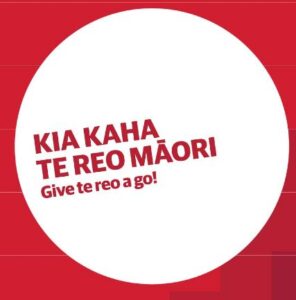Te Reo Māori in New Zealand
Part 4 of the interview with Ian Cormack contains insights into some of the characteristics of Te Reo Māori, status of Te Reo Māori in New Zealand and an outlook on Te Reo Māori in New Zealand from Ian’s perspective.
Unique characteristics of Te Reo Māori
Compared to European languages, which Ian had learned in the past, Māori is simpler in some ways and more difficult in others.
Especially the pronouns, which are more complex: There is no he/she/it in Māori, it is all one word which means Māori doesn’t have to try and avoid the masculine form as default (with they/their, for example in English).
There is also no grammatical gender in Māori, but a set of four dual pronouns instead. When referring to two people, there is “we” in the sense of “you and I”, but there is also “we” in the sense of “you and I but nobody else”. And there is also the plural version: “all of them, but not you”, “all of them and me and you”, “all of you”, and “all of them” (a number greater than two).
There also were pronouns for three people and for more than three. In Fijian, this trial still exists. Overall, relationships between people are explained much more clearly than in European languages. That is one of the most difficult things for English speakers learning Te Reo Māori.
Spelling, regional variations and relationship to other languages
Ian mentioned something interesting namely that Māori is more a syllabic language, like Japanese, and that a syllabary might therefore have been preferable over an alphabet. (But, of course, the missionaries were French and English and used the alphabet.)
The spelling of Māori has changed since the writing system was first introduced. There is a set of published guidelines by the Māori Language Commission, and Ian was also working with the Ministry of Education on guidelines for publishers.
Regional variations exist in terms of grammar, vocabulary, and to some extent the structure of the language. One can tell where a person is from by their use of the language, e.g. the words they employ, their way of talking, the metre of their language and their way of writing. The differences are not great enough to impede mutual intelligibility. In the South Island, the ng sound tends to be replaced with a k and sometimes the wh becomes a glottal stop – to name some examples.
Ian can pretty much understand Rarotongan and to some extent Tahitian because of his knowledge of Māori. These two languages, and Rapa Nui (Easter Island) Māori are most closely related to New Zealand Māori. It is also closely related to the languages of Hawai’i, Tahiti. Niuean and Samoan are close to each other, but not so closely related to Māori. Sometimes when Ian comes across a very old word in Māori that he doesn’t know and can’t find, he sometimes looks in a Hawaiian dictionary to find out its meaning. There is some consonant transposition between Māori and Hawaiian, e.g. tāne (male) in Māori is kāne in Hawaiian, and āniwaniwa (rainbow) is ānuenue in Hawaiian.
International interest in the Te Reo Māori
Iceland and Norway are looking at New Zealand and how Māori has been coping with an entire curriculum in Māori. Over the past decade, a lot of new vocabulary has been created in to cope with physics, chemistry, science, etc. up to the end of secondary school. This has meant a huge increase in the Māori vocabulary. Norway is trying to push back the influence of English and to revive its own languages and has been keeping a close eye on the developments in New Zealand.

tetaurawhiri.govt.nz
The current status of Te Reo Māori in New Zealand
The language is going through a revival, but is still endangered. However, it is better off than many indigenous languages – and Ian is an optimist. The efforts over the last years have shown that it is possible to resurrect a language from next to nothing. (This was done with Welsh as well.)
Māori did not have a written form before the missionaries came to New Zealand. However, they quickly became highly literate and were great letter writers. They even had more newspapers than the European settlers and started their own schools over time.
Outlook
When Ian was in Kawakawa in the 1970s, many people had a large passive vocabulary but few people were actively speaking the language. Now, a lot of young people can speak Māori with their grandparents, but their parents don’t speak the language at all or not well. With globalisation, people are pressured to show their uniqueness in the world. This might help to preserve Māori as a language among the young people, because it is something that is unique to them. When people outside of New Zealand think of New Zealand, the Māori culture is generally a part of their image. And this distinguishes New Zealand from other countries that speak English.

.png)